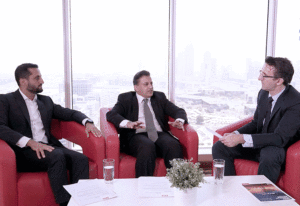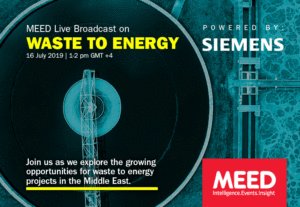
Financers see renewable technology as low risk, but policy change a worry
- Financers confident about renewable energy projects
- Feed-in-tariff programmes are a concern
- Challenges include the small size of the projects and currency risk
Financers have confidence about renewable energy projects, but see policy changes and currency as the biggest risk factors, MEEDs Mena Power conference was told.
Feed-in-tariff programmes are a concern, says Duncan Allison, managing director and head of power and renewables at London-based HSBC. It is set at attractive level, but how long will it last? Acwa Powers Dubai bid reopened debate over what is a reasonable tariff. As a banker, I need to know with certainty that feed-in tariffs will be stable.
Jordan lowered its feed-in tariff for wind projects, leading to long delays with the projects. Egypt will review feed-in tariffs for projects implemented after 2017.
The main risk is that the government changes down the tariff, and your business model for a $0.08 tariff doesnt work for $0.04, says Yusuf Macun, a UAE-based financial adviser. But so long as it is a good business model, it should be able to tolerate a change.
Other challenges include the small size of the projects, currency risk, and trends within the banking industry.
Local banks are back in the market [following the financial crisis], the Japanese are very aggressive in expanding market share, the French, and the Germans are back, says Allison. Given the economies of scale, $20m projects are more within the range of local banks. [HSBC and other project financers] will go for bigger projects, but as deals get bigger this will change.
Tighter banking regulations, such as Basel III, also mean the cost of financing is rising. But changing the tenors of financing models, and planning refinancing could mitigate this.
Finance markets are unsettled and it is difficult for international, and even local banks due to the long term financing requirements, says Macun. We should start the groundwork on capital markets for instruments where risks sit more comfortably.
In other regions, project bonds which are sold on capital markets are more common. This works well with the stable income from solar power projects.
Banks are always looking for means to refinance, and in the USA and Australia they fund projects in shorter terms and refinance on completion, says Allison. The main risk is construction, and once a plant has been in operation for a few years it has a very stable income. So the argument is that you only need project finance for the implementation stage, then local banks can take over. This isnt specific to renewables.
Renewables technology is now seen as proven and the projects are bankable if regulations are stable. As the fall in costs levels off, changes in feed-in tariffs should become less frequent, and renewables will be as reliable as other power and water projects.
We wont take untested technology, I dont know any bank which will take unproven technology unless it is a minor augmentation, says Allison. Regarding local manufacturing, if they working under license from someone, if we have confidence that it is done under supervision, its acceptable.
High profile problems with renewables projects in the past have not put off financers.
They are developing the integrated solar combined cycle concept in the region. At the Shams project they didnt understand the concept. They built two power plants basically, open cycle on top of solar. It led to huge costs and gave solar a bad name, but it generates guaranteed power.
You might also like...

TotalEnergies to acquire remaining 50% SapuraOMV stake
26 April 2024

Hyundai E&C breaks ground on Jafurah gas project
26 April 2024

Abu Dhabi signs air taxi deals
26 April 2024

Spanish developer to invest in Saudi housing
26 April 2024
A MEED Subscription...
Subscribe or upgrade your current MEED.com package to support your strategic planning with the MENA region’s best source of business information. Proceed to our online shop below to find out more about the features in each package.








